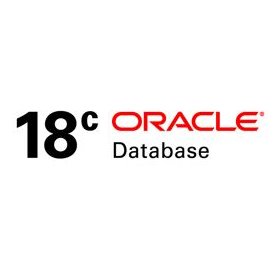| #oratidbit #db18c When cloning a non-CDB as a PDB or relocating a PDB, use the DBMS_PDB.EXPORTRMANBACKUP procedure to export RMAN backup metadata into the PDB dictionary, enabling backups of the source non-CDB or PDB to be usable for restore and recovery of the target PDB. |
| #oratidbit #db18c When a PDB resides in Oracle ASM, you can use a split mirroring technique to clone a PDB. The cloned PDB is independent of the original PDB. |
| #oratidbit #multitenant Every CDB has one and only one root container named CDB$ROOT. The root stores the system metadata required to manage PDBs. All PDBs belong to the root. The system container is the CDB root and all PDBs that belong to this root. |
| #oratidbit #multitenant A proxy PDB refers to a remote PDB, called the referenced PDB. Although you issue SQL statements in the proxy (referring) PDB, the statements execute in the referenced PDB. A proxy PDB is loosely analogous to a symbolic link file in Linux. |
| #oratidbit #multitenant By default, a user connected to one PDB must use database links to access objects in a different PDB in the same CDB. This behavior is directly analogous to a user in a non-CDB accessing objects in a different non-CDB. |
| #oratidbit #orclebs When a user tries to login and cannot be validated, meaning is not a valid user, a record is inserted into FND_UNSUCCESSFUL_LOGINS table for tracking purposes with username ANONYMOUS. |
| #oratidbit #orclebs The E-Business Suite Technology Codelevel Checker (ETCC) tool helps to identify application or database tier overlay patches that need to be applied to the Oracle E-Business Suite Release 12.2 system. |
| #oratidbit Oracle Database 18c is the terminal release for support of the Oracle Streams feature. Oracle Streams will be desupported from Oracle Database 19 onwards. Oracle Streams was deprecated in Oracle Database 12c (12.1). |
| #oratidbit #db18c When a PDB resides in Oracle ASM, a split mirroring technique can be used to clone a PDB. The cloned PDB is independent of the original PDB. The principal use case is to rapidly provision test and development PDBs in an Oracle ASM environment. |
| #oratidbit #orcldb The utllockt.sql script displays, in a tree fashion, the sessions in the system that are waiting for locks and the locks that they are waiting for. |
| #oratidbit #orcldb DBA_DDL_LOCKS view lists all DDL locks held in the database and all outstanding requests for a DDL lock. DBA_DML_LOCKS lists all DML locks held in the database and all outstanding requests for a DML lock. |
| #oratidbit DBMS_UTILITY.GET_TIME function determines the current time in 100th’s of a second. Call this function twice- at the beginning and end of some process– and then the first (earlier) number is subtracted from the second (later) number to determine the time elapsed. |
| #oratidbit DBMS_UTILITY.EXPAND_SQL_TEXT procedure recursively replaces any view references in the input SQL query with the corresponding view subquery. |
| #oratidbit DBMS_UTILITY.GET_DEPENDENCY procedure shows the dependencies on the object passed in. Uses the DBMS_OUTPUT package to display results, so declare SET SERVEROUTPUT ON to view dependencies. |
| #oratidbit #db18c Storage of private temporary table is memory only. Storage of global temporary table (pre-18c) is disk (temp tablespace). For global and private temporary tables, the database allocates temporary segments when a session first inserts data. |
| #oratidbit #db18c Starting 18c, each pluggable database (PDB) can have its own keystore, instead of there being only one keystore for the entire container database (CDB). |
| #oratidbit #db18c In a WITH or FROM clause of a SELECT statement, a query of an analytic view may include the FILTER FACT keywords to filter the data accessed by the analytic view prior to aggregation. |
| #oratidbit Analytic views provide a fast and efficient way to create analytic queries of data stored in existing database tables and views. Analytic views organize data using a dimensional model. |
| #oratidbit The #ORAchk Upgrade Readiness Assessment can be used to obtain an automated upgrade specific health check for upgrades to 11.2.x to 12.2.x. Many of the manual pre and post checks detailed in various upgrade related documents are automated using ORAchk. |
| #oratidbit Use the DBA_REGISTRY view to check the status of the database components. Status of NOSCRIPT indicates that the component is enabled, but there is no upgrade/downgrade script for this component. |
| #oratidbit Database Upgrade Assistant (DBUA) gets the information of the databases available for upgrade from the /etc/oratab file, and other locations in the oraInventory. |
| #oratidbit When upgrading database using DBUA, hidden parameters are not carried to the target database by DBUA. To keep the underscore (hidden) parameters after an upgrade, invoke “dbua -keepHiddenParams”. |








 “Oracle *daily* TidBits” (#oratidbit) published on
“Oracle *daily* TidBits” (#oratidbit) published on